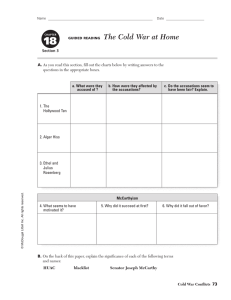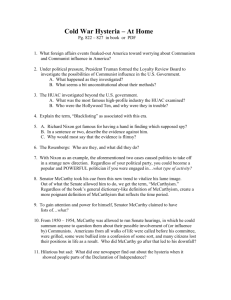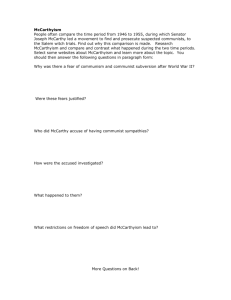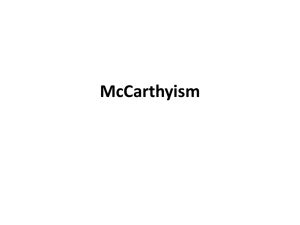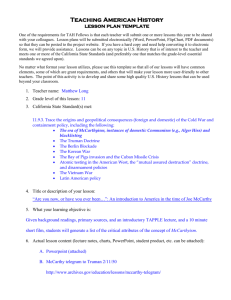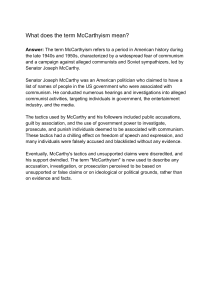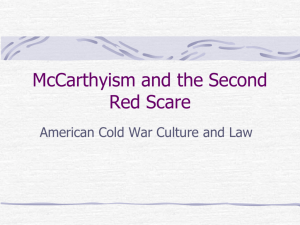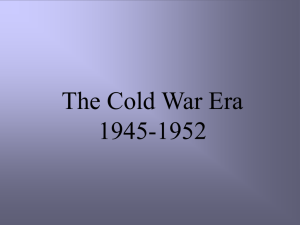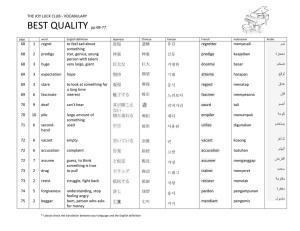The Depression – 1945) (1929 Meeting 6
advertisement
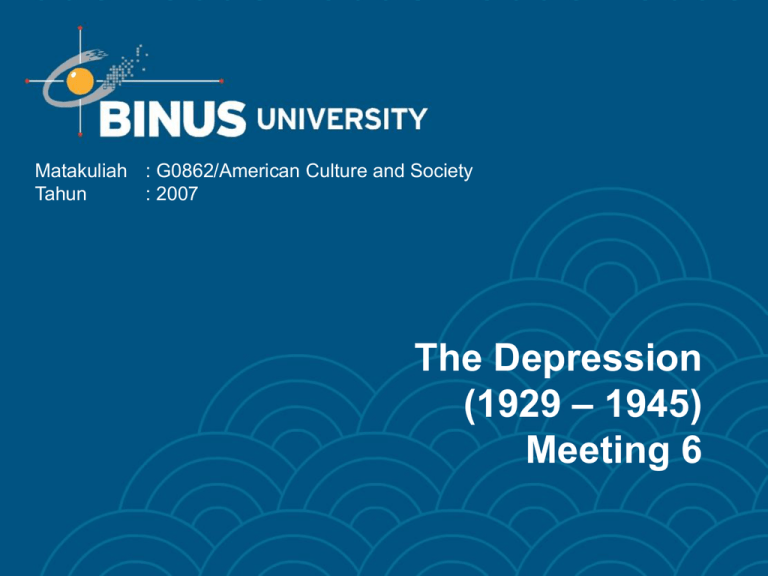
Matakuliah : G0862/American Culture and Society Tahun : 2007 The Depression (1929 – 1945) Meeting 6 Contents • • • • • The New Deal The World War II Woman as workforce Truman and the Cold War era The red scare: McCarthyism The New Deal • The New Deal was the title President Franklin D. Roosevelt gave to the series of programs he initiated between 1933 and 1938 with the goal of providing relief, recovery, and reform (3 Rs) to the people and economy of the United States during the Great Depression. • Dozens of alphabet agencies were created as a result of the New Deal. Historians distinguish between the "First New Deal" of 1933, which had something for almost every group, and the "Second New Deal" (1935–36), which introduced class conflict, especially between business and unions. • The main New Deal programs still in existence today are Social Security, the Securities and Exchange Commission (SEC), and the primary regulator of Wall Street. Pearl Harbor 1941 The New Deal The Depression, however, continued until the U.S. entered the Second World War. Under the special circumstances of war mobilization, massive war spending doubled the Gross National Product. Businessmen ignored the mounting national debt and heavy new taxes, redoubling their efforts for greater output as an expression of patriotism. Patriotism drove most people to voluntarily work overtime and give up leisure activities to make money after so many hard years. Patriotism meant that people accepted rationing and price controls for the first time. Cost-plus pricing in munitions contracts guaranteed that businesses would make a profit regardless of how many mediocre workers they employed and how inefficient the techniques they used. The demand was for a vast quantity of war supplies as soon as possible, regardless of cost. Business hired every person in sight, even driving sound trucks up and down city streets begging people to apply for jobs. New workers were needed to replace the 12 million working-age men serving in the military. Woman as Workforce Truman and the Cold War • The Cold War was the period of conflict, tension and competition between the United States and the Soviet Union and their respective allies from the mid-1940s until the early 1990s.Throughout the period, the rivalry between the two superpowers was played out in multiple arenas: military coalitions; ideology, psychology, and espionage; military, industrial, and technological developments, including the space race; costly defense spending; a massive conventional and nuclear arms race; and many proxy wars. Cold War (circa 1960) McCarthyism • Throughout the 1940s and 1950s America was overwhelmed with concerns about the threat of communism growing in Eastern Europe and China. Capitalizing on those concerns, a young Senator named Joseph McCarthy made a public accusation that more than two hundred "card-carrying" communists had infiltrated the United States government. Though eventually his accusations were proven to be untrue, and he was censured by the Senate for unbecoming conduct, his zealous campaigning ushered in one of the most repressive times in 20th-century American politics. McCarthyism • While the House Un-American Activities Committee had been formed in 1938 as an anti-Communist organ, McCarthy’s accusations heightened the political tensions of the times. Known as McCarthyism, the paranoid hunt for infiltrators was notoriously difficult on writers and entertainers, many of whom were labeled communist sympathizers and were unable to continue working. Some had their passports taken away, while others were jailed for refusing to give the names of other communists. The trials, which were well publicized, could often destroy a career with a single unsubstantiated accusation.


